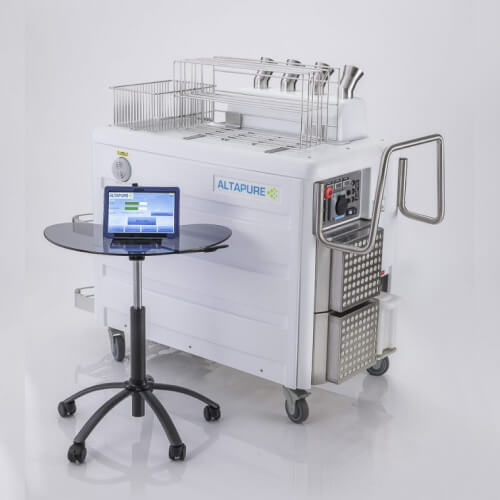Recent Posts
Aerosol Disinfection in Hospital

In healthcare settings, maintaining a sterile environment is paramount in preventing the spread of infections and viruses. Aerosol disinfection has emerged as a promising method for decontaminating hospital rooms, ensuring the safety of both patients and visitors.
Aerosol Disinfection in Hospital Environments: Safeguarding Healthcare Facilities and Visitors
Abstract: In healthcare settings, maintaining a sterile environment is paramount in preventing the spread of infections and viruses. Aerosol disinfection has emerged as a promising method for decontaminating hospital rooms, ensuring the safety of both patients and visitors. This paper explores the efficacy, safety, and implications of aerosol disinfection in healthcare facilities, highlighting its role in curbing infections and protecting public health.
Introduction: Hospital-acquired infections pose a significant threat to patients, healthcare workers, and visitors. Traditional cleaning methods might not always reach all surfaces effectively, leading to potential microbial reservoirs. Aerosol-based disinfection has garnered attention due to its ability to reach inaccessible areas, providing a comprehensive approach to sanitation in hospital rooms.
Efficacy of Aerosol Disinfection: Aerosol disinfection involves the dispersion of disinfectant particles throughout a room, covering surfaces and air. This method ensures a more thorough elimination of pathogens compared to conventional surface cleaning. Studies have demonstrated the efficacy of aerosol disinfection in reducing bacterial and viral loads in hospital environments, significantly minimizing the risk of cross-contamination.
Safety Measures for Hospital Visitors: While aerosol disinfection proves effective in eliminating pathogens, concerns about its safety for hospital visitors are valid. To address these concerns, hospitals implement strict protocols, including controlled dispersal of disinfectants during off-peak hours, ensuring proper ventilation post-treatment, and adherence to safety guidelines to minimize exposure risks.
Benefits and Challenges: The advantages of aerosol disinfection in hospital rooms are manifold. It offers a comprehensive and time-efficient approach, reducing the risk of infections, and ensuring a safer environment for patients and visitors. However, challenges such as potential respiratory irritants or allergens from disinfectants and the need for proper equipment maintenance warrant careful consideration.
Future Implications and Conclusion: As technology advances, the use of aerosol disinfection in healthcare settings will likely continue to evolve. Innovations in disinfectant formulations, delivery systems, and monitoring methods will further enhance the efficacy and safety of this approach. Nonetheless, continued research and stringent safety protocols are imperative to maximize the benefits while minimizing potential risks associated with aerosol disinfection in hospital rooms.
Conclusion: Aerosol disinfection stands as a promising method in the ongoing battle against hospital-acquired infections, providing a comprehensive solution to sanitize hospital environments effectively. While ensuring the safety of hospital visitors remains a priority, the continued advancement and careful implementation of aerosol disinfection protocols will undoubtedly play a crucial role in protecting public health within healthcare facilities.
Altapure AP 4 Unit for aerosol disinfection
Aerosol disinfection of ambulances Altapure PC RED aerosol air disinfection apparatus
Aerosol disinfection of rooms Altapure LLC AP-4 Training Video
Altapure LLC, AP 4 high level disinfection of large spaces in hospitals, burn units, clean rooms

